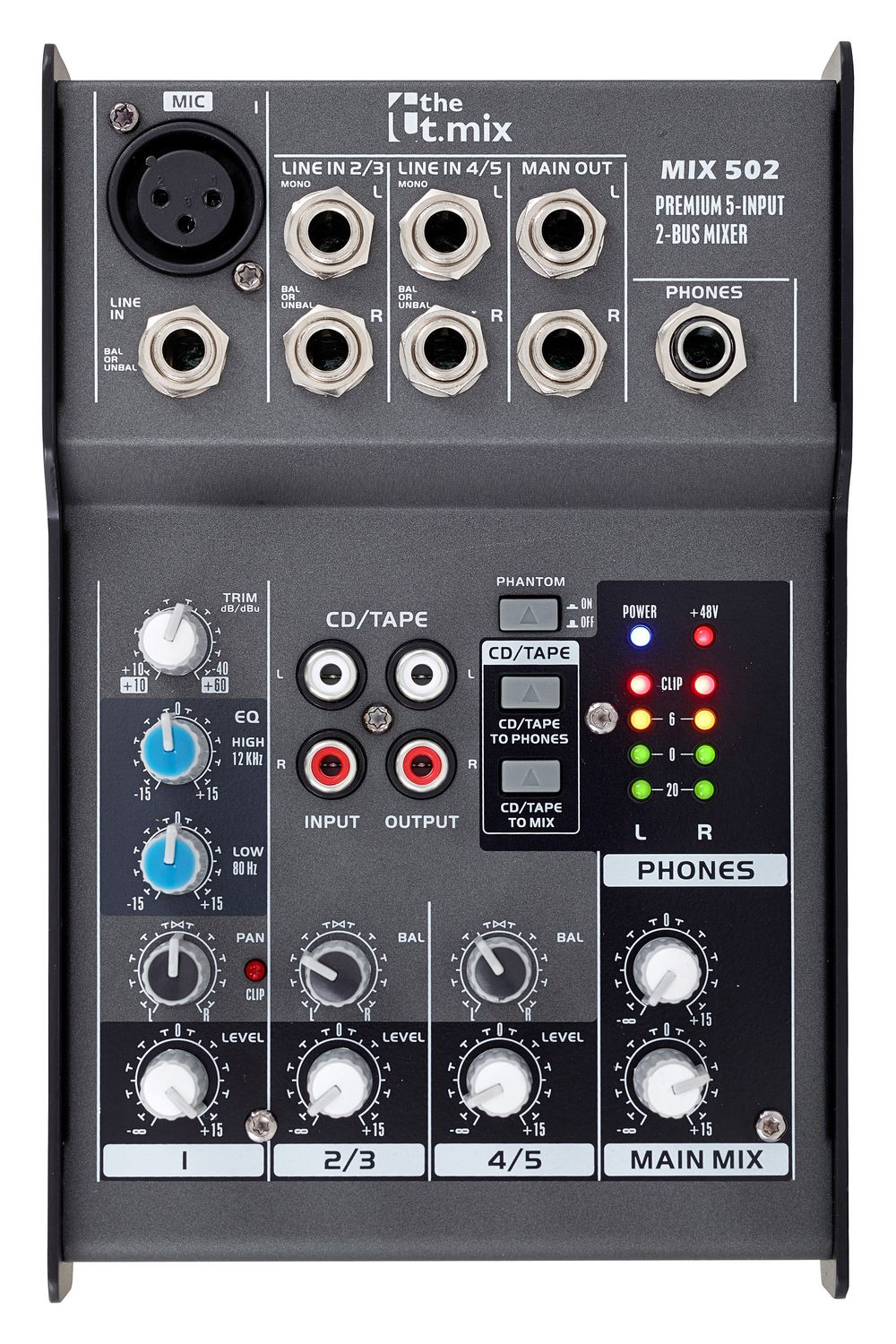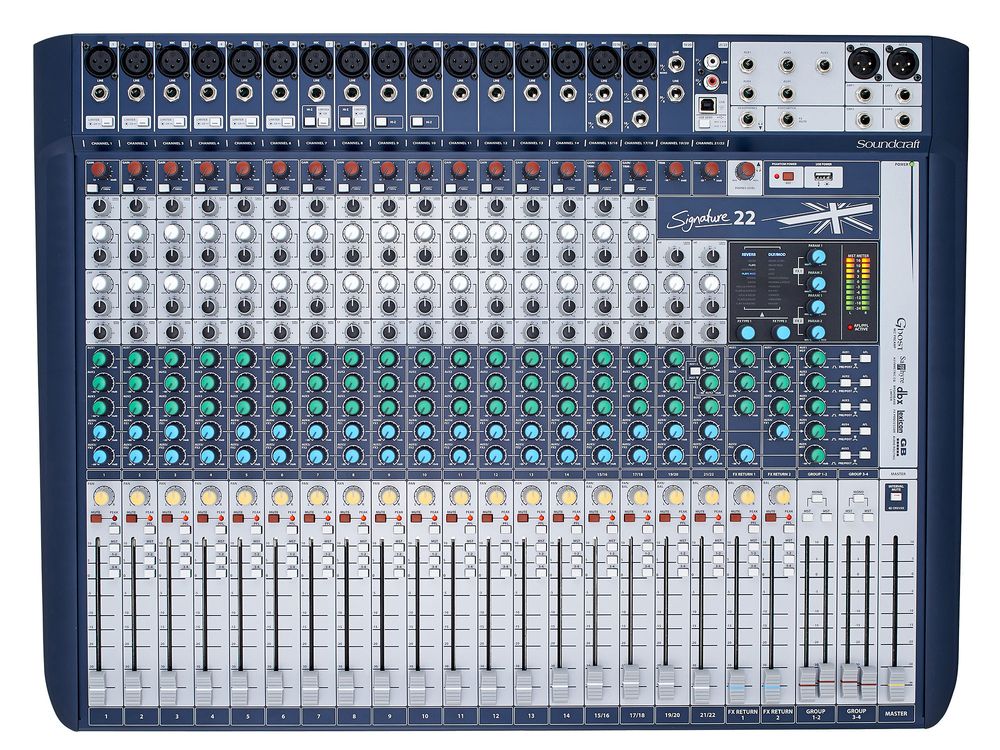2. What is a mixer and do I need it?
Mixers come in all sizes, from small to large, but their function remains the same: it combines multiple audio signals. So, if you want to balance the volume of a microphone with that of a guitar, for instance, you might consider a mixer. Especially when dealing with several microphones (like in a rehearsal space or on a small stage), a mixer is often indispensable. Despite having quite a few knobs on a mixer, don't despair. Typically, there's a "reading direction" from left to right (Channel 1 to Channel X) and from top to bottom (signal processing for an individual channel). In the case of a small mixer, it's still relatively straightforward (see image below). From left to right, you'll see Inputs 1, 2/3, and 4/5, followed by the outputs. Top to bottom, you'll see the signal processing options for each channel. For the mono channel 1, there's basic sound processing, while for the two stereo channels, there's only volume and pan control.

A small mixer with 5 input channels and basic signal processing
As the mixer gets larger (for band applications with monitoring, for instance), things might look a bit more complex. However, the concept remains the same. Simply find the desired channel from left to right and process the signal from top to bottom.

A medium-sized mixer with 22 input channels and slightly more complex signal processing




